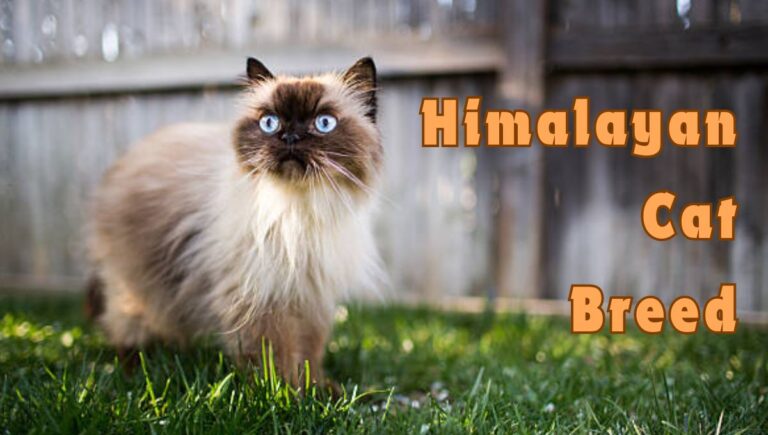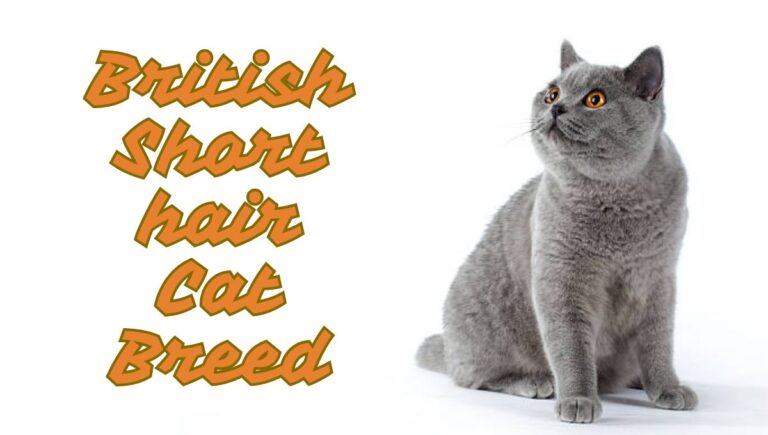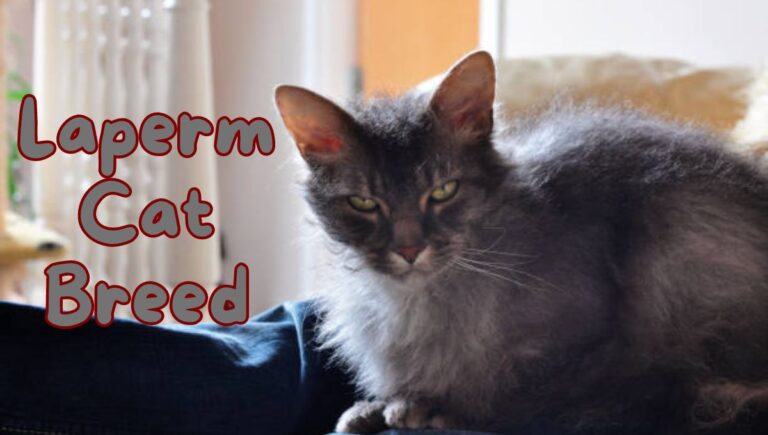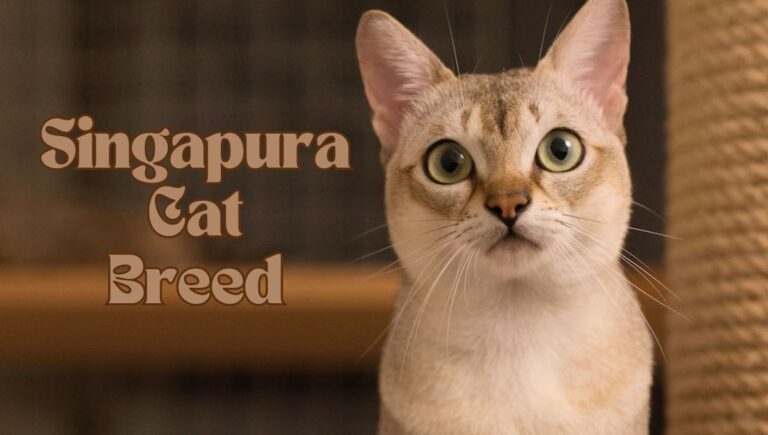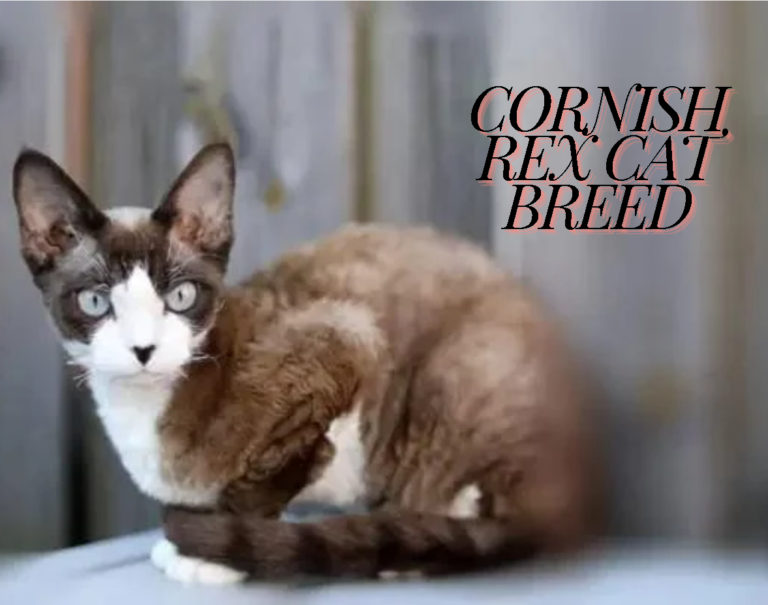American Short Hair Cat Breed
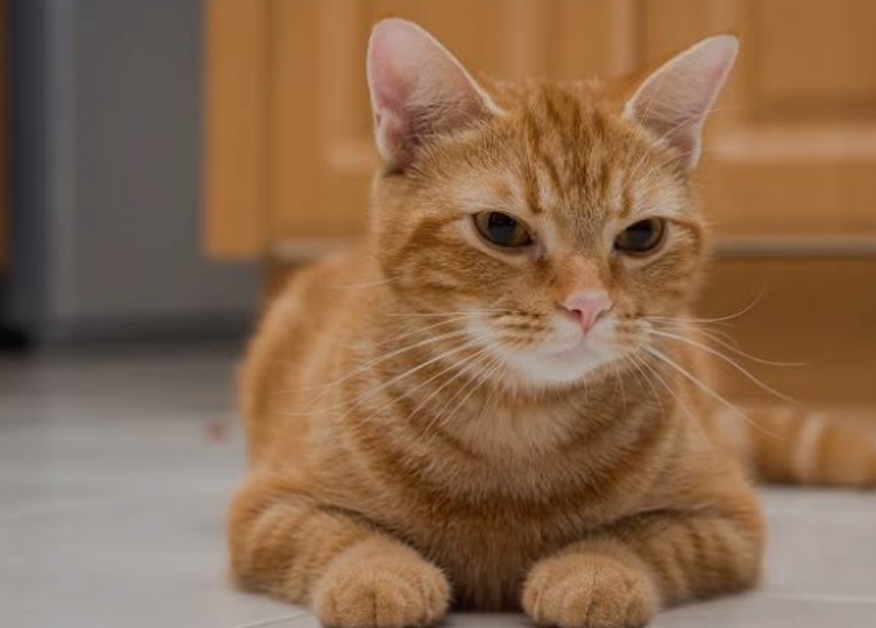
I. Introduction to American Shorthair Cat Breed
A. Overview of the American Shorthair Cat Breed
The American Shorthair cat breed holds a distinguished place in feline history, renowned for its remarkable traits and endearing qualities. Originating in the United States, this breed has made its mark both as a beloved companion and as a symbol of American heritage. This section will provide an in-depth exploration of the American Shorthair cat breed, shedding light on its name, significance, and distinctive characteristics.
1. Name and Significance
The name “American Shorthair” encapsulates the breed’s essence and origin. Its name pays homage to its American roots while emphasizing its distinctive short coat, distinguishing it from other feline breeds. This moniker reflects the breed’s enduring presence and popularity across the United States and beyond. As an integral part of American culture, the American Shorthair cat holds a special place in the hearts of cat enthusiasts worldwide.
2. Key Characteristics
The American Shorthair cat breed boasts a myriad of unique characteristics that set it apart from its counterparts. These distinguishing features contribute to its widespread appeal and enduring popularity among cat lovers.
a. Robust Build: The American Shorthair cat is celebrated for its sturdy and muscular build, reflecting its heritage as a working cat. With a well-proportioned body and a strong, athletic frame, this breed embodies strength and agility.
b. Short Coat: As its name suggests, the American Shorthair cat is characterized by its sleek and lustrous short coat. This low-maintenance fur requires minimal grooming, making it an ideal choice for pet owners seeking a fuss-free companion.
c. Variety of Colors and Patterns: One of the most striking aspects of the American Shorthair breed is its wide range of colors and patterns. From classic tabby stripes to vibrant calico patches, each cat exhibits a unique and captivating coat pattern, adding to the breed’s allure.
d. Affectionate Temperament: Renowned for its gentle and affectionate nature, the American Shorthair cat makes an excellent family pet. Known for its loyalty and sociability, this breed forms strong bonds with its human companions, delighting in their company and affection.
e. Adaptability: The American Shorthair cat is renowned for its adaptability and resilience. Whether in a bustling urban apartment or a rural farmhouse, this versatile breed thrives in diverse environments, making it well-suited to various lifestyles and living situations.
f. Longevity: With proper care and attention, the American Shorthair cat can enjoy a long and healthy lifespan, bringing joy and companionship to its owners for many years to come.
L
Sure, here’s the section on the origin and history of the American Shorthair cat breed:
II. Origin and History of the American Shorthair Cat Breed
A. Origins and Historical Significance
The origins of the American Shorthair cat breed are deeply intertwined with the history of the United States, reflecting a rich tapestry of influences and developments over centuries. To understand the breed’s journey, it’s essential to explore its origins, historical significance, and the diverse factors that have shaped its evolution.
1. Origins:
The American Shorthair cat breed traces its ancestry back to the early days of American colonization. European settlers brought cats onboard their ships to control vermin populations, laying the foundation for the breed’s lineage. These cats, known for their robustness and hunting prowess, interbred with domestic and feral cats already present in North America, resulting in a diverse population of felines with varying coat lengths and colors.
2. Historical Significance:
The American Shorthair cat’s role as a skilled hunter and companion quickly endeared it to early American settlers. Its ability to adapt to various environments and climates made it invaluable on farms, ships, and households across the burgeoning nation. As the United States expanded westward, so too did the American Shorthair cat, becoming a familiar sight in towns and homesteads from coast to coast.
3. Breeds that Played a Role in its Formation:
The formation of the American Shorthair breed involved contributions from various feline ancestors, each imparting its unique traits to the evolving lineage. While not as meticulously documented as some other pedigreed breeds, several breeds are believed to have influenced the development of the American Shorthair, including:
- British Shorthair: European cats brought by early settlers likely interbred with British Shorthairs, contributing to the breed’s robust build and dense coat.
- Domestic Shorthairs: Native American cats and European domestic cats formed the foundation of the American Shorthair breed, contributing to its diverse genetic pool and adaptability.
- Other Shorthair Breeds: Cats from other shorthair breeds, such as the European Shorthair and the Egyptian Mau, may have also played a role in shaping the American Shorthair’s characteristics.
4. Geographical Region of Origin:
The American Shorthair cat breed originated in the United States, with its early development centered around the eastern seaboard and colonial settlements. As American society expanded westward, so too did the breed’s presence, spreading across the vast expanse of the North American continent.
5. Influence of Origin on Characteristics:
The American Shorthair’s origins as a hardy and adaptable working cat have profoundly influenced its characteristics today. Its sturdy build, resilient nature, and versatile temperament are a testament to its early role as a hunter and companion in diverse environments. The breed’s ability to thrive in varied climates and settings reflects its heritage as a product of natural selection and human companionship.
6. Folklore and Legends:
While the American Shorthair breed lacks the mythical origins or folklore surrounding some other breeds, it holds a special place in American culture as a symbol of resilience, independence, and companionship. Stories of cats aboard colonial ships, prowling the streets of early American cities, and serving as loyal companions on the frontier evoke a sense of nostalgia and admiration for this iconic breed.
In conclusion, the American Shorthair cat breed’s origin and history are as diverse and captivating as the nation it calls home. From its humble beginnings as a working cat to its cherished status as a beloved companion, this breed embodies the spirit of the American experience, enriching the lives of countless individuals with its enduring charm and steadfast loyalty.
III. Physical Characteristics of American Shorthair Cat Breed
A. Table: American Shorthair Cat Breed Overview
| Field | Information |
|---|---|
| Height | 8-10 inches (20-25 cm) |
| Weight | 11-15 pounds (5-7 kg) |
| Life Span | 15-20 years |
| Good with | Children, other pets |
| Temperament | Affectionate, laid-back |
| Intelligence | Moderate |
| Shedding Amount | Moderate |
| Grooming | Low |
| Exercise Needs | Moderate |
| Energy Level | Moderate |
| Drool Amount | Low |
| Coat Length/Texture | Short, dense |
| Colors | Various |
| Patterns | Solid, Tabby, Calico, etc. |
B. Size, Coat Type, and Color Variations
The American Shorthair cat is a medium to large-sized breed, with males typically larger than females. On average, males measure 8-10 inches (20-25 cm) in height and weigh between 11-15 pounds (5-7 kg), while females are slightly smaller.
Coat Type:
The American Shorthair’s coat is short, dense, and plush to the touch. It lies close to the body, providing warmth and protection without excessive bulk. The coat’s texture is smooth and glossy, enhancing the breed’s sleek and polished appearance.
Color Variations:
American Shorthair cats come in a wide array of colors and patterns, reflecting the breed’s diverse genetic heritage. Common coat colors include black, white, blue, cream, silver, and red, among others. Additionally, American Shorthairs can exhibit various patterns such as tabby, solid, calico, tortoiseshell, and bicolor, adding to their visual appeal.
C. Distinctive Physical Features
While the American Shorthair cat may not possess as many distinctive physical features as some other breeds, several characteristics set it apart and contribute to its unique charm.
Ear Shape:
The American Shorthair’s ears are medium-sized, with rounded tips and a slight tilt forward. Positioned atop a broad and rounded head, the ears complement the breed’s overall balanced and proportionate appearance.
Tail Characteristics:
The American Shorthair’s tail is of moderate length, neither too long nor too short, with a thick base tapering to a rounded tip. The tail is flexible and expressive, often used for balance and communication. While not as bushy as some other breeds, the American Shorthair’s tail is nevertheless well-furred and proportionate to its body size.
Unique Physical Traits:
- Muscular Build: The American Shorthair cat boasts a sturdy and muscular build, reflecting its heritage as a working cat. With a broad chest, strong legs, and a robust frame, this breed exudes strength and athleticism.
- Rounded Eyes: The American Shorthair’s eyes are large, round, and expressive, conveying a sense of warmth and affection. Set slightly apart and framed by thick whisker pads, the eyes lend the breed a friendly and approachable demeanor.
- Balanced Proportions: One of the hallmarks of the American Shorthair breed is its balanced and proportionate body structure. With a medium-length body, neither too compact nor too elongated, and well-developed musculature, this breed epitomizes grace and elegance in feline form.
In summary, the American Shorthair cat breed is characterized by its medium to large size, short dense coat, and wide range of coat colors and patterns. While lacking in overtly distinctive physical features, the breed’s balanced proportions, rounded ears, expressive eyes, and muscular build contribute to its overall appeal and charm.
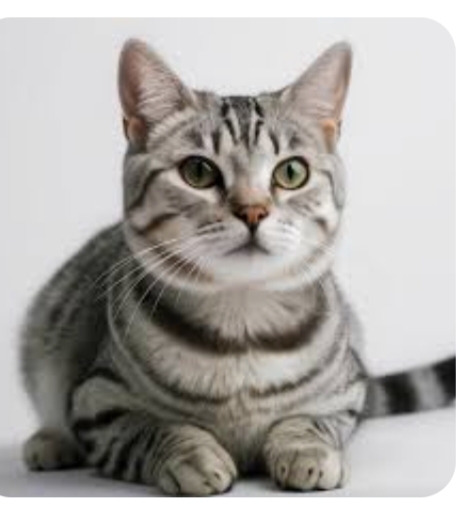
IV. Temperament and Personality of American Shorthair Cat Breed
A. Overview of American Shorthair Cat’s Temperament
- General Demeanor:
American Shorthair cats are known for their laid-back and affectionate nature. They typically exhibit a calm and easygoing demeanor, making them ideal companions for families, singles, and seniors alike. Unlike some breeds known for their high energy levels, American Shorthairs are content to spend their days lounging in sunny spots or curling up on their owner’s lap. - Friendliness and Sociability:
American Shorthairs are renowned for their friendly and sociable nature. They often form strong bonds with their human companions and enjoy spending time with family members of all ages. These cats are typically tolerant of children and other pets, making them excellent additions to multi-pet households. - Common Behavioral Traits:
While American Shorthairs are generally well-mannered and easy to live with, they do exhibit some breed-specific behavioral traits:
- Playfulness: American Shorthairs retain their playful nature well into adulthood, enjoying interactive play sessions and engaging with toys. Providing ample opportunities for play and mental stimulation can help satisfy their need for activity and prevent boredom.
- Independence: Despite their affectionate nature, American Shorthairs also value their independence and may enjoy spending time alone or exploring their surroundings at their own pace. Providing a safe and stimulating environment with access to toys, scratching posts, and perches can help fulfill their natural curiosity and need for exploration.
- Territorial Behavior: Like many cats, American Shorthairs may exhibit territorial behavior, particularly towards unfamiliar animals or intruders in their territory. Providing vertical spaces, such as cat trees or shelves, can allow them to observe their surroundings and establish a sense of security in their environment.
- Managing Breed-Specific Behavioral Issues:
While American Shorthairs are generally well-adjusted cats, there are some steps that owners can take to address any behavioral issues that may arise:
- Socialization: Early and ongoing socialization is essential for American Shorthair kittens to help them develop confidence and adaptability. Introducing them to various people, animals, and environments from a young age can help prevent fearfulness and anxiety in adulthood.
- Enrichment: Providing plenty of environmental enrichment, such as interactive toys, puzzle feeders, and vertical spaces, can help prevent boredom and reduce the risk of behavioral issues such as destructive scratching or excessive vocalization.
- Positive Reinforcement: Using positive reinforcement techniques, such as treats and praise, can help reinforce desirable behaviors and strengthen the bond between owner and cat. Avoid punishment-based training methods, as these can cause fear and anxiety and may exacerbate behavioral issues.
- Consulting a Professional: If behavioral issues persist despite efforts to address them, consulting with a veterinarian or animal behaviorist can provide additional guidance and support. They can help identify underlying causes of behavior problems and develop a tailored behavior modification plan to address them effectively.
In conclusion, the American Shorthair cat breed is characterized by its friendly, sociable nature and laid-back demeanor. While they may exhibit some breed-specific behavioral traits, such as playfulness and independence, these can be managed through proper socialization, environmental enrichment, and positive reinforcement training techniques. With patience, understanding, and proactive management, American Shorthairs make wonderful companions for cat lovers of all ages.
V. Care and Maintenance of American Shorthair Cat Breed
A. Grooming Needs
- Coat Care and Hygiene:
American Shorthair cats have short, dense coats that require minimal grooming compared to long-haired breeds. However, regular grooming is still important to maintain coat health and remove loose fur. Brushing your American Shorthair’s coat once or twice a week with a soft-bristled brush helps remove dead hair and distribute natural oils, keeping the coat shiny and healthy. - Grooming Tips:
- Use a soft-bristled brush or grooming mitt to gently brush your cat’s coat.
- Pay special attention to areas prone to matting, such as behind the ears and under the armpits.
- Trim your cat’s nails regularly to prevent overgrowth and reduce the risk of snagging or scratching.
- Brush your cat’s teeth regularly to promote dental health and prevent periodontal disease.
- Check your cat’s ears for signs of dirt or infection and clean them as needed with a veterinarian-approved ear cleaner.
- Recommended Accessories:
- Soft-bristled brush or grooming mitt
- Nail clippers or nail grinder
- Cat toothbrush and toothpaste
- Ear cleaner
- Grooming wipes for quick touch-ups
B. Health Considerations
- Common Health Problems:
American Shorthair cats are generally healthy and robust, but they may be prone to certain health issues, including:
- Obesity: Due to their hearty appetite, American Shorthairs may be prone to obesity if not provided with a balanced diet and regular exercise.
- Dental Problems: Like many cats, American Shorthairs can develop dental issues such as tartar buildup and gum disease without proper dental care.
- Hypertrophic Cardiomyopathy (HCM): This is a common heart condition in cats, including American Shorthairs. Regular veterinary check-ups and screenings can help detect and manage this condition.
- Recommended Veterinary Care:
- Annual wellness exams: Schedule regular veterinary check-ups to monitor your cat’s overall health and address any potential issues early.
- Vaccinations: Keep your cat up-to-date on vaccinations to protect against common feline diseases.
- Dental care: Maintain your cat’s dental health through regular brushing and professional cleanings as recommended by your veterinarian.
- Lifespan and Tips for Healthier Life:
- The average lifespan of an American Shorthair cat is typically 15-20 years with proper care and attention.
- To promote a longer and healthier life, provide your cat with a balanced diet, regular exercise, and mental stimulation. Keep your cat indoors to protect them from outdoor hazards such as traffic and predators.
C. Nutrition
- Proper Nutrition:
- Choose a high-quality cat food formulated for your American Shorthair’s age, size, and activity level.
- Offer a balanced diet that includes protein, fat, carbohydrates, vitamins, and minerals.
- Provide fresh water at all times to keep your cat hydrated.
- Feeding Schedule and Portion Control:
- Offer small, frequent meals throughout the day to prevent overeating and maintain a healthy weight.
- Follow feeding guidelines provided by the cat food manufacturer and adjust portion sizes as needed based on your cat’s weight and activity level.
- Dietary Restrictions or Allergies:
- While American Shorthairs generally do not have specific dietary restrictions or allergies, it’s important to monitor your cat’s response to new foods and treats and consult with your veterinarian if you notice any adverse reactions.
D. Exercise
- Exercise Plan:
- Provide daily opportunities for play and exercise to keep your American Shorthair mentally and physically stimulated.
- Engage in interactive play sessions with toys such as feather wands, laser pointers, and catnip mice.
- Set up a cat tree or scratching post to encourage climbing and stretching.
- Consider leash training your cat for supervised outdoor walks or harness training for indoor adventures.
- Breed-Specific Exercise Needs:
- While American Shorthairs are not as high-energy as some breeds, they still benefit from regular exercise to maintain a healthy weight and prevent boredom.
- Aim for at least 20-30 minutes of active playtime each day to keep your cat happy and healthy.
In summary, caring for an American Shorthair cat involves regular grooming, veterinary care, proper nutrition, and adequate exercise. By providing your cat with the necessary care and attention, you can help ensure a long, happy, and healthy life for your feline companion.
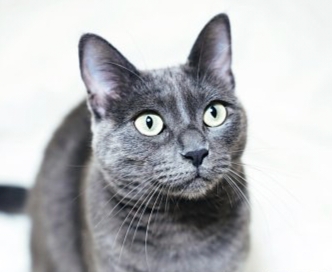
VI. Suitability for Families and Other Pets to American Shorthair Cat Breed
A. Compatibility with Children and Other Animals
- Interactions with Kids:
American Shorthair cats are generally well-suited for families with children. They have a friendly and sociable nature, making them patient and tolerant companions for kids of all ages. However, it’s essential to teach children how to interact respectfully with cats, including gentle handling and respecting the cat’s space when needed. - Tolerance for Other Pets:
American Shorthairs typically get along well with other pets, including dogs and other cats. Their laid-back and easygoing nature allows them to adapt to multi-pet households with relative ease. Proper introductions and gradual acclimation can help ensure a smooth transition for all pets involved.
B. Special Considerations for Multi-Pet Households
- Introducing the Breed to Existing Pets:
- When introducing an American Shorthair cat to existing pets, it’s essential to proceed slowly and cautiously to prevent conflicts.
- Start by keeping the new cat separate from other pets in a designated room or area with food, water, litter box, and comfortable bedding.
- Allow supervised interactions between pets through a baby gate or cracked door to gauge their reactions and gradually increase exposure over time.
- Provide positive reinforcement, treats, and praise for calm and friendly interactions between pets to encourage bonding and reduce tension.
C. Environmental Needs
- Space and Environment:
American Shorthair cats are adaptable and can thrive in a variety of living environments, including apartments, houses, and rural settings. While they do not require as much space as some larger breeds, providing vertical space such as cat trees, shelves, and perches can enhance their environment and allow for climbing and exploration. - Temperature and Climate:
American Shorthair cats are well-suited to indoor living and can adapt to a wide range of temperatures. However, they may prefer warmer climates and cozy indoor spaces during colder months. Providing access to sunny spots and cozy bedding can help keep them comfortable year-round.
In summary, the American Shorthair cat breed is well-suited for families with children and other pets, thanks to its friendly and sociable nature. With proper introductions and acclimation, American Shorthairs can thrive in multi-pet households and adapt to various living environments, making them versatile and adaptable companions for cat lovers of all ages.
VII. Adoption and Breeder Considerations for American Shorthair Cat Breed
A. Encouraging Adoption from Shelters or Rescue Organizations
- Benefits of Adoption:
Adopting an American Shorthair cat from a shelter or rescue organization offers numerous benefits, including:
- Saving a Life: By adopting from a shelter, you provide a second chance to a cat in need and potentially save a life.
- Variety of Cats: Shelters often have a variety of cats of different ages, colors, and personalities to choose from, allowing you to find the perfect match for your family.
- Cost Savings: Adoption fees are typically lower than purchasing from a breeder, and many shelters include vaccinations, spaying/neutering, and microchipping in the adoption fee.
- Support and Resources: Shelters often provide support and resources to adopters, including information on cat care, behavior, and training.
- Finding a Shelter or Rescue:
Research local animal shelters and rescue organizations in your area to find American Shorthair cats available for adoption. Websites such as Petfinder and Adopt-a-Pet can also help you search for adoptable cats online.
B. Selecting a Reputable Breeder
- Importance of Ethical Breeding Practices:
If you decide to purchase a purebred American Shorthair cat from a breeder, it’s essential to select a reputable breeder who prioritizes the health and well-being of their cats. Look for breeders who adhere to ethical breeding practices, including:
- Health Screenings: Reputable breeders conduct health screenings for genetic disorders common in the breed and provide documentation of health clearances for parent cats.
- Socialization: Kittens raised in a home environment with plenty of socialization are more likely to develop into well-adjusted and sociable cats.
- Transparency: A reputable breeder should be willing to answer your questions, provide references, and allow you to visit their facilities to meet the parent cats and view the living conditions.
- Finding a Reputable Breeder:
Research breeders carefully and ask for recommendations from breed clubs, veterinarians, and other cat owners. Look for breeders who are registered with reputable cat associations such as The International Cat Association (TICA) or the Cat Fanciers’ Association (CFA).
C. Cost Considerations and Adoption Fees
- Adoption Fees:
Adoption fees for American Shorthair cats from shelters or rescue organizations vary depending on factors such as location, age, and health status. On average, adoption fees range from $50 to $150 and typically include vaccinations, spaying/neutering, and microchipping. - Purchase Price from Breeders:
The cost of purchasing a purebred American Shorthair cat from a reputable breeder can range from $500 to $1500 or more, depending on factors such as pedigree, lineage, and breeding quality. - Additional Expenses:
In addition to the adoption or purchase fee, consider other expenses such as initial veterinary exams, vaccinations, microchipping, spaying/neutering (if not already done), grooming supplies, litter, food, toys, and ongoing veterinary care.
In conclusion, whether you choose to adopt an American Shorthair cat from a shelter or rescue organization or purchase from a reputable breeder, it’s essential to prioritize the health and well-being of the cat. By doing your research, asking the right questions, and considering the long-term commitment involved in cat ownership, you can find the perfect companion to enrich your life for years to come.
VIII. Conclusion
A. Summary of Key Points about the American Shorthair Cat Breed
The American Shorthair cat breed embodies a blend of versatility, adaptability, and charm that makes it a beloved companion in households around the world. Here are the key points to remember about this remarkable breed:
- Defining Characteristics:
- Medium to large-sized with a sturdy and muscular build.
- Short, dense coat in a variety of colors and patterns.
- Friendly, laid-back temperament with a gentle and affectionate nature.
- Playful, yet independent, with a penchant for forming strong bonds with family members.
- Temperament:
- American Shorthair cats are known for their sociable and easygoing nature, making them excellent companions for families, singles, and seniors alike.
- They exhibit a high level of tolerance and patience, particularly with children and other pets, making them a popular choice for multi-pet households.
B. Importance of Responsible Ownership and Proper Care
Owning an American Shorthair cat is a rewarding experience, but it comes with a commitment to responsible ownership and proper care. Here’s why it’s essential to consider all aspects before bringing this breed into your home:
- Health and Well-being:
- Provide regular veterinary care, including vaccinations, check-ups, and preventive measures to ensure your cat’s health and well-being.
- Maintain a balanced diet, regular exercise, and mental stimulation to promote a long and healthy life for your cat.
- Socialization and Environment:
- Socialize your American Shorthair kitten from an early age to help them develop into well-adjusted and confident cats.
- Create a safe and enriching environment with plenty of opportunities for play, exploration, and interaction.
- Financial Responsibility:
- Consider the financial aspects of cat ownership, including adoption or purchase fees, veterinary care, grooming supplies, food, and other ongoing expenses.
- Budget accordingly and be prepared for unexpected veterinary costs or emergencies.
- Commitment to Lifetime Care:
- Remember that owning a cat is a long-term commitment, often spanning 15-20 years or more. Be prepared to provide love, care, and attention for the duration of your cat’s life.
In conclusion, the American Shorthair cat breed is a wonderful addition to any home, bringing joy, companionship, and unconditional love to its owners. By embracing the responsibilities of ownership and providing proper care and attention, you can ensure a happy and fulfilling life for your American Shorthair companion for years to come.
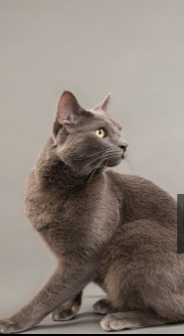
FAQs: American Shorthair Cat Breed
- Q: Are American Shorthair cats hypoallergenic?
- A: While no cat breed is truly hypoallergenic, American Shorthairs are known to produce fewer allergens than some other breeds. Their short, dense coat sheds less and produces less dander, making them a better option for allergy sufferers compared to long-haired breeds.
- Q: Do American Shorthair cats have any breed-specific health concerns?
- A: American Shorthair cats are generally healthy and robust, but they may be prone to certain health issues such as obesity, dental problems, and hypertrophic cardiomyopathy (HCM). Regular veterinary check-ups and preventive care can help detect and manage these conditions early.
- Q: Are American Shorthairs good with children and other pets?
- A: Yes, American Shorthair cats are known for their friendly and sociable nature, making them excellent companions for children and other pets. They are typically tolerant and patient, making them well-suited for multi-pet households.
- Q: How big do American Shorthair cats get?
- A: American Shorthair cats are medium to large-sized breeds, with males typically larger than females. On average, males can weigh between 11-15 pounds (5-7 kg) and females slightly smaller, with a height of 8-10 inches (20-25 cm).
- Q: Do American Shorthair cats require a lot of grooming?
- A: No, American Shorthair cats have short, dense coats that require minimal grooming compared to long-haired breeds. Regular brushing once or twice a week is usually sufficient to remove loose fur and maintain coat health.
- Q: What is the lifespan of an American Shorthair cat?
- A: On average, American Shorthair cats have a lifespan of 15-20 years with proper care and attention. Providing a balanced diet, regular exercise, veterinary care, and a loving home environment can help ensure a long and healthy life for your American Shorthair companion.

